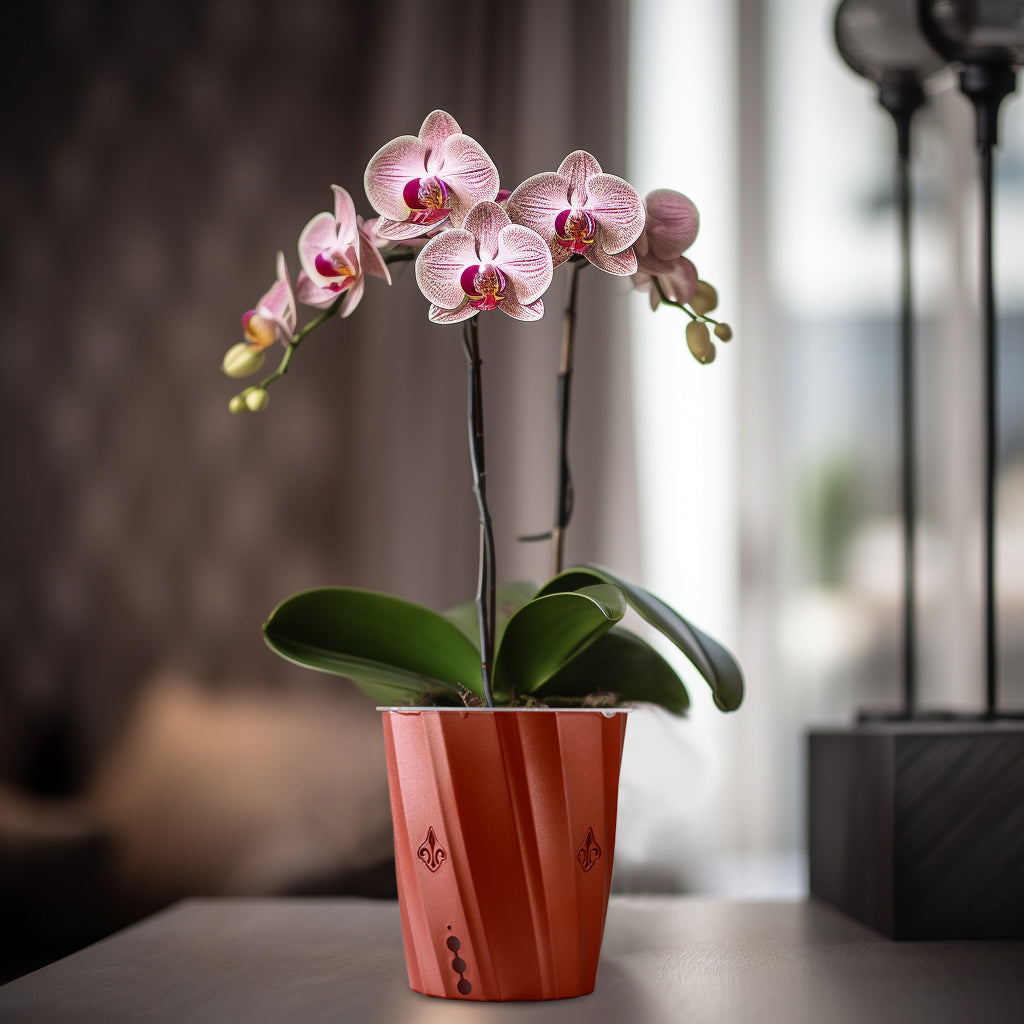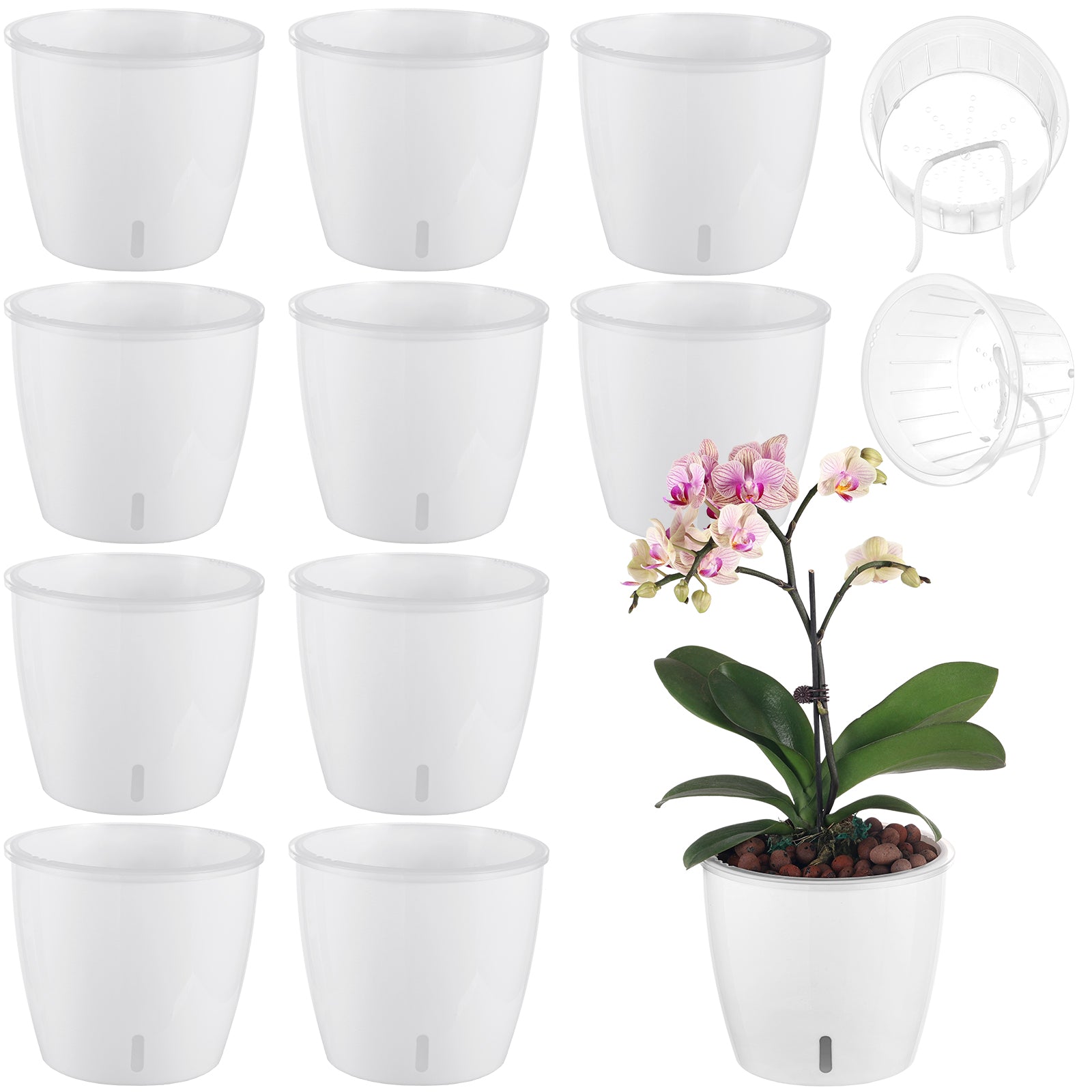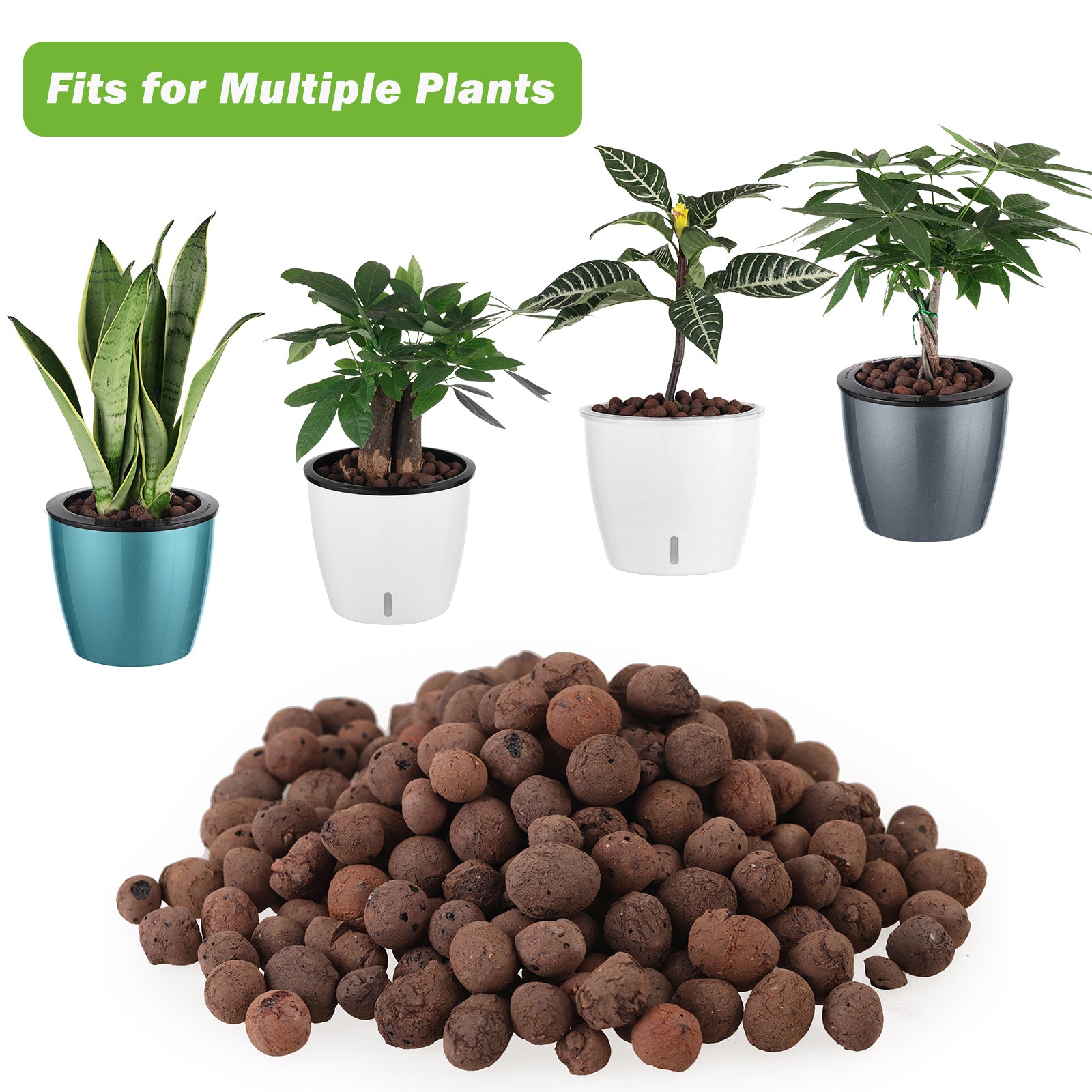Best Soil for Orchids - Homemade Orchid potting mix
Orchids, with their delicate and exquisite blooms, have always captivated the hearts of plant enthusiasts. However, their unique needs for oxygen, water, and nutrients make them more challenging to care for than other plants.
Unlike typical nursery soil, which may not provide the ideal conditions for orchids to thrive, these elegant flowers prefer a well-draining potting mix that promotes proper airflow around their base. In this article, we will delve into the importance of selecting the best soil for orchids and explore the options available.
Creating a balanced homemade orchid potting mix involves key components for optimal plant health. The orchid potting mix comprises fir or pine bark, perlite or coarse sand, charcoal, and sphagnum moss.
Whether you are a seasoned orchid enthusiast or a beginner looking to start your orchid collection, this article will help you make informed decisions about the soil for your beautiful orchids.
Let's started
The Importance of Choosing the Right Soil for Orchids
Orchids are known for their stunning beauty and elegance, making them popular among plant enthusiasts. However, one crucial factor often overlooked when caring for orchids is the type of soil they are planted in.

Choosing the suitable soil for your orchids is essential for their overall health and growth. In this part, we will explore the importance of selecting the proper soil and its impact on your orchids' well-being.
1. Drainage is Key
Orchids are epiphytic plants, meaning they naturally grow on other plants and trees, deriving their nutrients from the air and rainwater. In their natural habitat, orchids are exposed to constant airflow and have their roots exposed to the elements. Therefore, replicating these conditions in the potting medium is crucial.
Orchids require a well-draining soil that allows excess water to flow freely, preventing the roots from becoming waterlogged. Using a soil mix specifically formulated for orchids or creating your own with ingredients like bark, perlite, or coconut husk chips can help ensure proper drainage.
2. Aeration for Healthy Roots
In addition to proper drainage, orchids need a soil mix that provides adequate aeration to their roots. Aeration allows oxygen to reach the roots, promoting healthy growth and preventing root rot in orchids.
Orchid roots are adapted to absorb moisture and nutrients from the air, so a soil mix that allows air circulation is essential. Avoid using dense, compacted soils that can suffocate the roots and hinder their growth. Opt for a loose, well-aerated soil mix that offers the right balance of moisture retention and airflow.
3. Moisture Retention without Saturation
While orchids require well-draining soil, it doesn't mean they should be deprived of moisture. Orchids need a soil mix that can hold some moisture without saturating the roots. The ideal soil should retain enough water to prevent dehydration but should dry out relatively quickly to avoid waterlogged conditions.
Orchid potting mixes often contain organic materials like sphagnum moss or coconut fiber, which help retain moisture while allowing excess water to drain. Finding the right balance between moisture retention and drainage is crucial to prevent root rot and promote healthy orchid growth.
4. Nutrient Availability
Choosing suitable soil for orchids is about providing proper drainage aeration and nutrient availability. Orchids have unique nutritional requirements, and their soil should be able to supply these essential nutrients.
A good orchid potting mix contains organic matter that slowly breaks down, releasing nutrients for the orchids to absorb. Furthermore, many orchid enthusiasts supplement their plants with fertilizers specifically formulated for orchids to ensure they receive the necessary nutrients.
Ultimately, selecting the right soil for your orchids is of utmost importance for their overall health and well-being.
Step-by-step Guide for How to Make Orchid Soil
Orchids are unique plants that require specific conditions for optimal growth. Unlike regular plants, orchids do not rely on soil for nutrients. Instead, they thrive in potting mixes that provide good airflow and drainage.

Finding the best orchid potting mix for your orchids is essential as it directly affects their health and overall well-being. Let's take a closer look at homemade potting soil for orchids.
A good potting media should meet several criteria. It should retain moisture to ensure adequate hydration for the plants, drain rapidly to prevent waterlogging, provide good circulation for proper root health, and be slow to decompose to avoid frequent repotting.
By choosing the appropriate potting soil for orchid, you can determine the amount of airflow your orchids receive, the frequency and amount of watering required, and ultimately, influence the overall health of your plants.
It's important to note that no one-size-fits-all potting media exists for every orchid variety or grower. You may need to experiment with combinations to find what works best for you and your plants.
This trial-and-error process can be part of the fun of orchid cultivation, allowing you to learn and adapt your techniques to suit the specific needs of your orchids.
Bark Mix is a Popular Choice
There are several common materials used in orchid potting mixes. Bark mix is a popular choice as it closely mimics the natural growing environment of epiphytic orchids.
It can be used for various orchid varieties. Some common materials that can be combined to create a bark mix include tree fern, perlite, coco husk chips, sphagnum moss (also known as peat moss), and fir bark.
Tree Fern & Coco Husk Chips
Tree fern is known for its fast drainage and slow decomposition, but it can be expensive and has a low ability to retain moisture. Perlite, which resembles bits of styrofoam, is lightweight, porous, and stores nutrients and moisture well while also draining excess water.
Coco husk chips are absorbent and decompose slowly, although they may not drain as effectively as coco husk chunks or bark.
Sphagnum moss & Fir Bark
Sphagnum moss is recommended for terrestrial mixes and retains air and water, but it can retain too much water if packed too tightly or when it decomposes.
Fir bark comes in different grades (fine, medium, and coarse) and can be easily obtained and is relatively inexpensive, although it resists water at first and decomposes faster compared to other materials.
Recipe for Homemade Orchid Potting Mix
First, choose your primary potting material for aeration, such as ground Douglas fir bark, coastal redwood bark, or Osmunda tree fern fiber.

Secondly, prepare your secondary potting material for moisture retention, which can include sphagnum moss, perlite, or coconut husk chips.
Lastly, mix both primary and secondary potting materials at a ratio of 5:1 respectively.
If using Osmunda tree fern fiber, it is recommended to soak it in water for 12 hours before use and then combine it with redwood bark at a ratio of 3:1.
Specific Orchid Potting Mixes
Different orchid varieties may require specific potting mixes. A delicate mix is recommended for orchids with small roots that prefer some dampness, such as slipper orchids, oncidiums, or miltonias.
This mix consists of fine fir bark, fine coco chips or fine-grade coco husk chips, redwood bark, and fine charcoal. A medium mix is suitable for moth orchids, cattleyas, and most mature orchids.
This mix includes medium fir bark or coco husk chunks, medium charcoal, and perlite. Experiment with different materials and ratios to find out what works best for your orchids.
Overall, choosing the right potting mix for your orchids is crucial for their overall health and growth. By considering factors such as moisture retention, drainage, and airflow, you can create a suitable environment for your orchids to thrive.
Leca Balls for Orchids.
LECA, which stands for Lightweight Expanded Clay Aggregate, is a commonly used material in hydroponic gardening. It goes by various other names, such as Hydroton, Growstone, and Grow Rocks.

Its popularity among hydroponic gardeners has also made it readily available for orchid growers. One of the key advantages of LECA is its water retention capability, which is beneficial for plants that require consistent moisture.
Furthermore, LECA is lightweight and does not break down easily, making it a durable and long-lasting option for orchid cultivation. In the context of orchid growing, LECA serves as an excellent mix-in with other organic materials like fir bark.
Adding LECA Balls to the mix helps reduce the compaction of the growing medium and enhances airflow to the orchid's roots. This is crucial for maintaining healthy root systems and preventing issues like root rot.

Another advantage of LECA is its reusability. After using LECA in an orchid pot, it can be sterilized and reused for future plantings. This can be done through methods like boiling or microwaving, which help eliminate potential pathogens or contaminants.
By reusing LECA, orchid growers can save money and reduce waste, making it an environmentally friendly option. Overall, LECA provides a range of benefits for orchid cultivation.
Its water retention capability, lightweight nature, and durability make it popular among hydroponic gardeners and orchid enthusiasts.
When combined with other organic materials, LECA enhances the growing medium's structure, promoting healthy root development and preventing issues related to over-watering.
If you want more information about LECA Ball.
Potting Your Orchids
Now that your orchid soil is ready, it's time to repot your orchid. Follow these guidelines.
- Choose appropriately sized pots with good drainage holes. Using a pot like the Orchid Pot With Holes is recommended, as these pots are made specifically for orchid plants.

- Gently remove the orchids from their current pots, taking care not to damage the roots.
- At the bottom of the new pot, apply a layer of the prepared soil mix.
- Position the orchid on top of the soil, ensuring the roots are spread out evenly.
- Fill the remaining space around the roots with the soil mix, gently pressing it down to provide stability.
How to Care for Potted Orchids After They Have Been Planted
Once your orchids are potted in the new soil mix, it's essential to provide them with proper aftercare:
- Place the pots in an area with adequate light, but avoid direct sunlight, as it can burn the leaves.
- Water the orchids when the top inch of the soil feels dry, but be careful not to overwater.
- Regularly monitor the moisture levels and adjust your watering schedule accordingly.
- Fertilize your orchids with a balanced orchid fertilizer according to the package instructions.
Following this step-by-step guide, you can create the ideal orchid soil mix for your plants. Remember that orchids have different preferences, so it's essential to understand the specific needs of your orchid variety. With suitable soil and proper orchid care, your orchids will reward you with stunning blooms and vibrant growth.
Conclusion.
Soil plays a crucial role in the growth and development of orchids. Unlike other plants, orchids have specific soil requirements that need to be met in order for them to thrive. The ideal orchid soil should be loose, well-draining, and provide adequate air circulation to the roots.
Also, it should have the ability to retain moisture without becoming waterlogged. By understanding the unique needs of orchids and choosing the right soil mix, orchid enthusiasts can create the optimal growing conditions for their plants.
FAQs:
Can I Use Regular Potting Soil for Orchids
Regular potting soil is not ideal for orchids. Orchids have unique growing requirements, and using regular potting soil can lead to poor drainage and root rot.
Using a specialized orchid potting mix is recommended to provide the necessary aeration and moisture retention for healthy orchid growth. Using the right type of potting mix will ensure that your orchids receive the proper nutrients and growing conditions they need to thrive.
Can I Use Cactus Soil for Orchids
No, cactus soil is not suitable for orchids. Orchids have different moisture and nutritional requirements compared to cacti. It's recommended to use a specific orchid potting mix with a well-draining yet moisture-retentive composition.
Do I Need Special Soil for Orchids?
Yes, orchids require a particular type of soil called orchid potting mix or orchid bark mix. This type of soil is specifically formulated to meet the unique needs of orchids. It provides good drainage while retaining moisture, allowing the orchid roots to breathe.
It is possible for regular potting soil to hold too much moisture, which can lead to root rot. Therefore, it is essential to use particular soil for orchids to ensure their healthy growth and development.
What Type of Soil is Best for Orchids?
The best type of soil for orchids is a well-draining mixture that allows air to circulate the roots. Orchids prefer a loose and airy medium that retains some moisture without becoming waterlogged.
A blend of bark, sphagnum moss, and perlite or pumice is commonly used for orchid cultivation. It is important to note that different types of orchids may have specific soil requirements, so it is always advisable to research the specific needs of your orchid species.
*Disclosure: This post may contain affiliate links. As an Amazon Associate I earn from qualifying purchases.
















Leave a comment